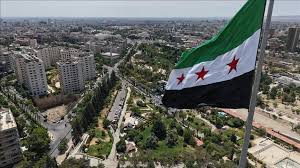The Lifting of American Sanctions: A Strategic Shift in the Midst of Regional Transformations
August 25, 202521 ViewsRead Time: 3 minutes

Font Size
16
After more than two decades of economic blockade, Syria is witnessing a historic turning point with the United States' announcement to lift the sanctions imposed since 2004. This decision did not arise from nowhere, but rather culminated from deep geopolitical transformations that followed the fall of the Assad regime and the emergence of a new government that attempted to present itself as a different partner for the West.
The journey began in May 2004 when President George Bush signed Executive Order 13338, which was funded under the pretexts of supporting terrorism and the chemical weapons file. Over the years, these sanctions evolved into a complex web that included the Caesar Act of 2019, which tightened the noose around the Syrian economy and isolated it from the world.
Today, the American president signs Order 14312 not as a grant, but as recognition of a new reality. The fall of the Assad regime, the rise of new leadership, and changing American policy priorities in the region are all factors that pushed Washington to reassess its calculations. However, the decision carries a clear caution - the sanctions have not been lifted for everyone. Led by the Office of Foreign Assets Control (OFAC), the United States has retained the weapon of accountability against symbols of the former regime, human rights violators, and drug traffickers, indicating that the West will not relinquish its moral leverage.
For the Syrian economy, which has been exhausted by war and sanctions, this law appears as a lifeline. The opening of international banking doors, the return of financial remittances, and the beginning of investment flows - especially from the Gulf - are all indicators of the possibility of a new economic birth. But the road will not be strewn with roses. Syria still suffers from destroyed infrastructure, rampant corruption, and fierce regional competition for reconstruction deals.
The biggest challenge facing the new Syrian government will be turning this golden opportunity into tangible reality. Will it be able to convince foreign investors of the seriousness of the reforms? Will it succeed in balancing relations among the conflicting regional powers vying for influence?
Regional responses have been varied. Between clear Gulf welcome, noticeable European hesitation, and Iranian caution against a "new hegemony," it seems that Syria is entering a new phase of the struggle for influence, but this time through economic means rather than arms.
This decision is not the end of the road, but the beginning of a new chapter in the Syrian crisis. It is a shift from a war of guns to a war of interests, from a battlefield to an open market for investments. Success or failure will not be measured by the lifting of sanctions, but by the ability of Syrians to turn this opportunity into lasting peace and real prosperity.
The journey began in May 2004 when President George Bush signed Executive Order 13338, which was funded under the pretexts of supporting terrorism and the chemical weapons file. Over the years, these sanctions evolved into a complex web that included the Caesar Act of 2019, which tightened the noose around the Syrian economy and isolated it from the world.
Today, the American president signs Order 14312 not as a grant, but as recognition of a new reality. The fall of the Assad regime, the rise of new leadership, and changing American policy priorities in the region are all factors that pushed Washington to reassess its calculations. However, the decision carries a clear caution - the sanctions have not been lifted for everyone. Led by the Office of Foreign Assets Control (OFAC), the United States has retained the weapon of accountability against symbols of the former regime, human rights violators, and drug traffickers, indicating that the West will not relinquish its moral leverage.
For the Syrian economy, which has been exhausted by war and sanctions, this law appears as a lifeline. The opening of international banking doors, the return of financial remittances, and the beginning of investment flows - especially from the Gulf - are all indicators of the possibility of a new economic birth. But the road will not be strewn with roses. Syria still suffers from destroyed infrastructure, rampant corruption, and fierce regional competition for reconstruction deals.
The biggest challenge facing the new Syrian government will be turning this golden opportunity into tangible reality. Will it be able to convince foreign investors of the seriousness of the reforms? Will it succeed in balancing relations among the conflicting regional powers vying for influence?
Regional responses have been varied. Between clear Gulf welcome, noticeable European hesitation, and Iranian caution against a "new hegemony," it seems that Syria is entering a new phase of the struggle for influence, but this time through economic means rather than arms.
This decision is not the end of the road, but the beginning of a new chapter in the Syrian crisis. It is a shift from a war of guns to a war of interests, from a battlefield to an open market for investments. Success or failure will not be measured by the lifting of sanctions, but by the ability of Syrians to turn this opportunity into lasting peace and real prosperity.